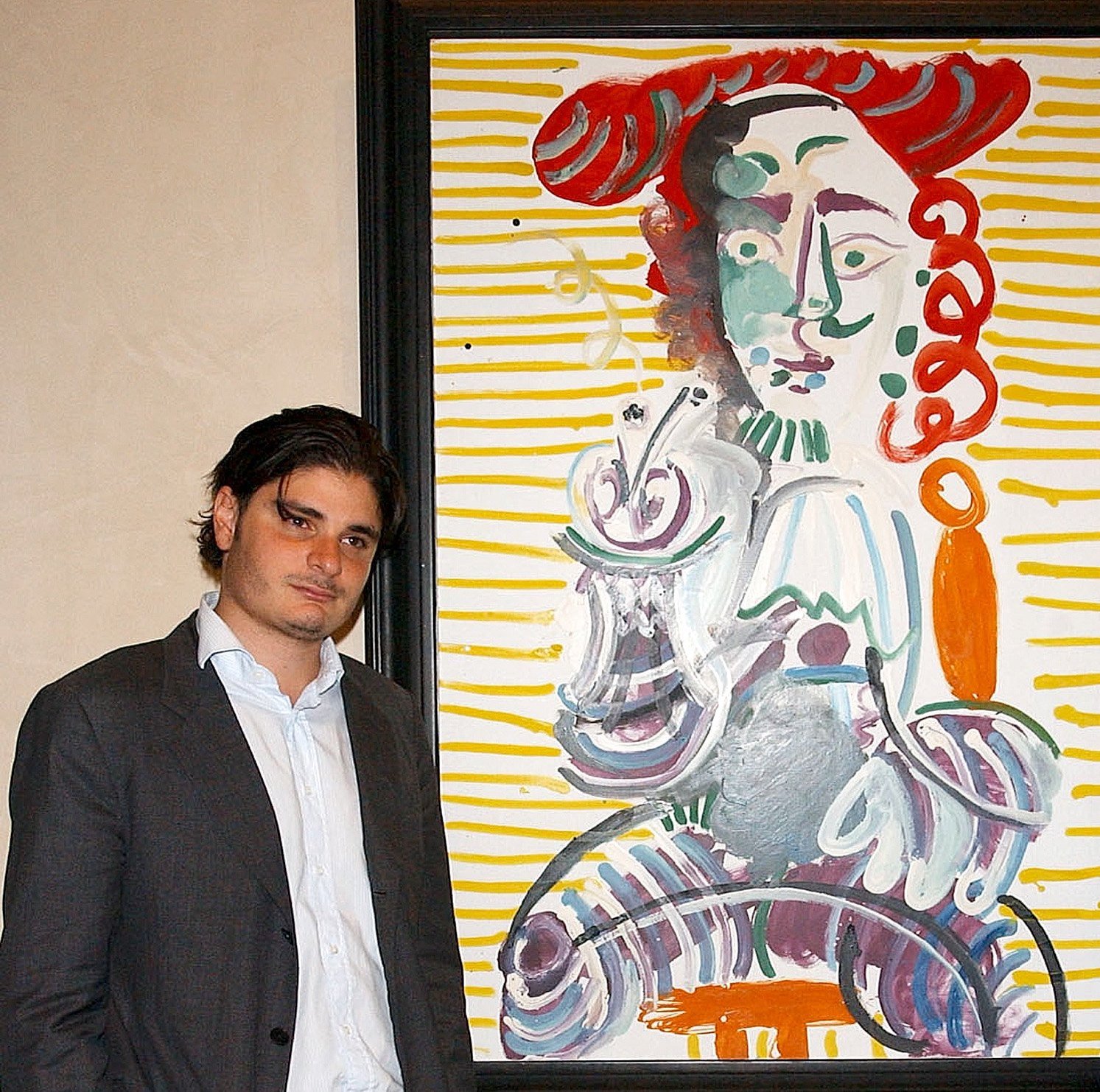
Two letters subpoenaed from Sotheby’s in April as part of a lawsuit filed in New York State Supreme court by the estate of Oscar Stettiner against Helly Nahmad and his gallery, show an executive at Sotheby’s addressing the gallery as the consignor of a Modigliani painting that is at the heart of the suit. The Nahmad family has long claimed that the owner of the painting is the Panama registered company International Art Center (IAC).
According to documents recently revealed in the leak of the so-called “Panama Papers” (in which hundreds of the world’s superrich were connected to offshore companies established by the Panamanian law firm Mossack Fonseca), the Nahmad family has been in control of IAC for two decades.
The claim was initially brought by Philippe Maestracci, the France-based grandson of Stettiner, the Jewish art dealer who, it is claimed in the suit, lost the painting, Modigliani’s Seated Man With a Cane (1918), during the Nazi occupation of France. The work was put up for sale in 1996 and was purchased by IAC.
While the Nahmads have asserted, through their attorney, Aaron Richard Golub, that the only owner of the Modigliani in question, is IAC, the letters from Sotheby’s, reveal that Helly Nahmad Gallery was communicated with, at least on those two occasions, as the work’s consigner and possibly its owner.
Links between members of Nahmad family and International Art Center (IAC)
ICIJ Offshore Leaks database
Related: What to Expect From the Release of the Panama Papers Searchable Database
The two letters, written by Lucian J. Simmons, Sotheby’s head of restitution and senior vice president of trusts and estates, are dated February 11, 2010 and April 28, 2010. In the February 11 letter, quoted below, Simmons tells Nahmad of the presence of the Stettiner claim:
While in London last week for the Impressionist and Modern auctions I was approached by James Palmer of the Mondex Corporation (I attach a scan of his business card), an heir finding agency which also undertakes research for families who lost artworks in WWII.
Mr. Palmer told me that he has been instructed by the heirs of Oscar Stettiner and Alphonse Stettiner. On their behalf he intends to advance a claim against the Modigliani which you consigned for us for sale on the basis that it was looted from the Stettiner family during WWII and was never recovered after the war. He did not provide me with any details of the claim or of the alleged theft of the painting… I have not, and will not, disclose you [sic] identity to him unless I am obligated to do so by order of the Court.
Amedeo Modigliani Seated Man with a Cane (1918)
Photo: pubhist.com
In the letter, Simmons additionally offers his assistance in recommending the names of “attorneys specialist in this field in Paris and New York.”
In the April 28 letter, Simmons updates Nahmad to a second communication from representatives of the Stettiner heirs. “I have just received the attached letter from a lawyer in London who represents the Mondex Corporation,” Simmons writes Nahmad. “Mondex in turn claims to represent the ‘Stettiner heirs.’ I have acknowledged receipt of the letter and have confirmed that I will forward it to Sotheby’s 2008 consignor. I have not, of course, identified you as the owner and nor [sic] have I commented in any way on the claim.”
The Nahmad family has flatly denied owning Seated Man With a Cane for years.
According to the NYS Department of State website, the corporation currently known as Helly Nahmad Gallery was initially incorporated in 1974 but the entity was known as “Davlyn Gallery, Inc.” In 2000, the entity took on the name Helly Nahmad Gallery, Inc.
It has been reported that IAC bought the painting at Christie’s London in 1996 for $3.2 million, when its provenance was attributed to known French collector Roger Dutilleul. Then, in 2008, the painting was relisted in the Sotheby’s catalogue with a provenance of “possibly” belonging to Roger Dutilleul and “possibly” to Stettiner.
The purpose of the subpoena according to a representative for the estate was to “finally peel away that shroud of secrecy” and the anonymity of the Nahmad family and “to reveal the true ownership of the painting.”
We reached out to Sotheby’s for comment, but the company declined to comment citing “ongoing litigation.”
Emmanuel di Donna, a former Sotheby’s Impressionist specialist at the time of the 2008 sale, who now runs an eponymous gallery on the Upper East Side of Manhattan was copied in both of the Simmons letters. We reached out to him for comment but he had not responded by publication time.
In April, Swiss prosecutors raided a storage space in Geneva in an effort to find Seated Man With a Cane. In a statement to Agence France Presse, Swiss authorities confirmed that they sequestered the work and opened up “a criminal procedure” within “the framework of the revelations linked to the Panama Papers.”